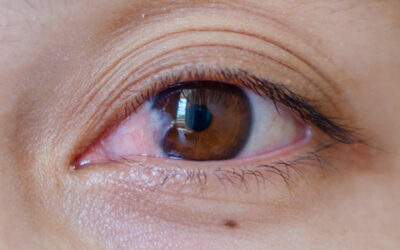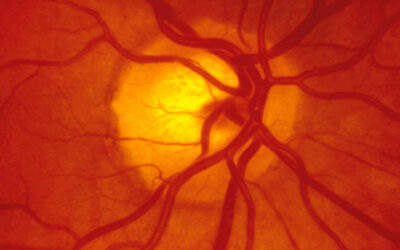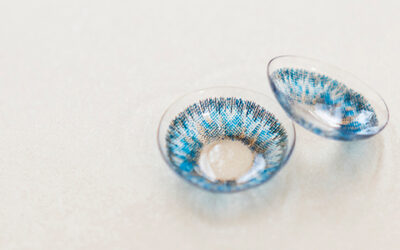All You Need to Know About Myopia (near-sightedness)

Myopia, or near-sightedness, is a type of refractive error or an eye focusing disorder, where objects up close look clear but distant objects look blurred. It is one of the most common vision problems in the world, with 6.3 million people in Australia with myopia (data reported by the Australian Bureau of Statistics (ABS) 2017-18).
Near-sightedness generally occurs when the eyeball is longer than average, or the front surface of the eye (the cornea) or the lens, is too curved. As a result, the light that enters the eye does not focus directly on the retina, which causes distant objects to look blurry.
We have recently introduced MiYosmart lenses suitable for children, with more details below on how these may be of benefit.
Let’s look at its symptoms, causes, and correction measures.
Symptoms of Myopia
The most common symptom of myopia is blurry vision when looking at distant objects or reading something that’s situated far away.
Some other symptoms might include eye strain, headaches and squinting. Feeling fatigued when driving or playing sports can also be the result of near-sightedness.

Different Types of Myopia
Although myopia is a condition where distant objects appear blurry, the degree of blur can vary from person to person. Different degrees of myopia can affect the vision differently.
Myopia can be one of three types, affecting people differently. With simple myopia a person may require spectacles and/ or contact lenses to see clearly.
Progressive myopia is more serious, usually affecting children. It is imperative that the best treatment through spectacles or contact lenses is used, together with education regarding visual habits and learning.
Elevated levels of myopia can increase the risk of certain eye conditions such as retinal detachment or glaucoma.

Causes and Risk Factors of Myopia
Myopia is caused by a longer than average eyeball length, or when your cornea or lens is too curved. These are the factors that cause light rays to focus in front of the retina, causing blurry vision in the distance.
Certain risk factors can increase your chances of developing myopia. One of these risk factors is genetics, this means that if anyone in your family has myopia, you are more likely to have myopia too. This risk is greater if both parents are myopic.
The second risk factor (and large contributor) is environmental – this includes proximity and duration of exposure to close work, whether books or screens. Additionally, limited time spent outdoors is another factor.
How can Myopia be corrected?
There are several ways to correct myopia and obtain clearer vision. Some of these solutions are as follows:
Prescription Glasses:
Wearing prescription glasses is one of the easiest options to correct myopia. Your optometrist can check the power or degree of myopia and prescribe glasses to help you see better.
Contact Lenses:
Contact lenses are also a convenient option to correct myopia especially if you have an active lifestyle or simply prefer not to wear glasses. In some cases of higher degrees of myopia, contact lenses can offer better vision and a wider field of view than prescription glasses. Contact lenses are available in various materials and designs. Your optometrist can help you decide which contact lens option is best for you. Also bear in mind, contact lens prescriptions are not always the same as glasses prescriptions so it’s best to have your eyes tested by your eye care professional.
Contact lenses and glasses can be used interchangeably for different activities. Eg contact lenses are a much safer option for contact sport, don’t fog up when the person is hot, and can be a great alternative in social situations.
Corneal Refractive Therapy (CRT):
CRT, also known as orthokeratology (ortho-k) is a non-surgical procedure where special contact lenses are worn to temporarily change the shape of the cornea. This results in a temporary correction of myopia without having to wear glasses. Orthokeratology has also been shown to reduce the progression of myopia, especially in young people.
In Summary
Myopia can affect anyone and is usually found at an early age. Certain signs and symptoms can help early detection of myopia so that it can be treated earlier.
If you notice your child sitting close to the television or bringing things up close to see, they may have myopia. Children with myopia may also complain of blurry vision especially when looking far away, or rubbing and blinking their eyes frequently.
Across our stores we have introduced MiYosmart lenses, designed to reduce progression of Myopia in children. The advanced lens technology is made specifically for young eyes and may assist with children’s vision.

There are contact lenses designed for myopia control to be fitted to children and teenagers.
There are steps one can take to halt or stop myopia progression in some cases. This is especially important for children. An optometrist can assess and discuss the ways parents can assist in safeguarding their children’s vision.
Learning good visual practices is vitally important. Parents, carers and teachers have a primary role in detection and prevention of the onset and/ or progression of this condition.
If you notice any of these signs or symptoms, it is best to have your eyes checked by your optometrist.




